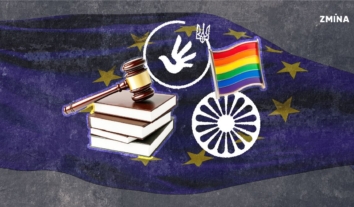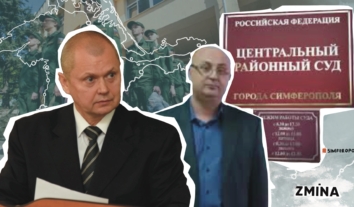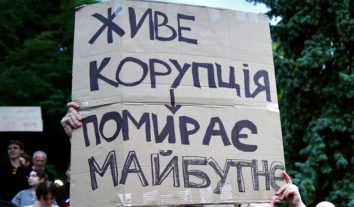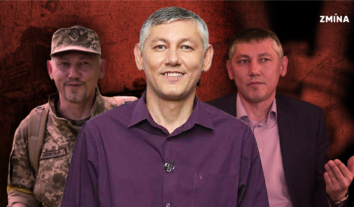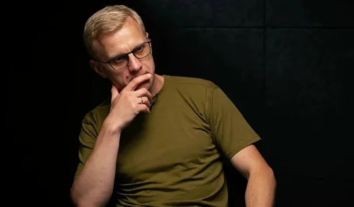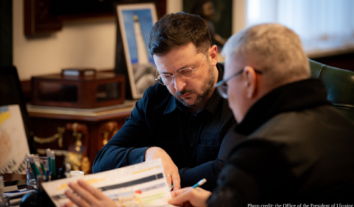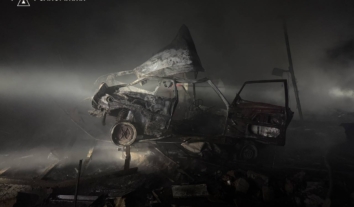Is Ukraine’s strategy in the International Court of Justice justified, and what lessons should we learn?
On January 31, 2024, the International Court of Justice (ICJ) issued a judgment in the case of Ukraine v. Russia. This is the first application to cover the armed conflict events between two countries since 2014. It focuses on the violation of the Convention on the Elimination of All Forms of Racial Discrimination concerning the events in Crimea and the Convention for the Suppression of the Financing of Terrorism in the context of the situation in Donbas. Some Ukrainian officials described the decision as “historic.” It is hard to disagree, as this is the first decision of the ICJ on violations under both conventions. It is undoubtedly of great value in interpreting legal instruments for the development of international law.
But is this a sufficient result given the price, literally and metaphorically, that Ukraine – the Ukrainian people – paid for this case?
Experts from the Ukrainian Legal Advisory Group analyzed the Court’s decision and the prerequisites that could have contributed to the dismissal of most of the claims.

In its judgment of January 31, the Court upheld only one of the five alleged violations under the Terrorist Financing Convention, did not accept Ukraine’s interpretation of many concepts and terms in the Convention, and recognized a partial violation of one of the nine alleged violations under the Convention on the Elimination of All Forms of Racial Discrimination. The Court also did not award Ukraine any compensation from the Russian Federation for these violations.
At the same time, the services of the law firm Covington & Burling LLP, which the Ministry of Foreign Affairs hired to support Ukraine’s cases against Russia (including this case at the ICJ), amounted to $42 million in 2023.
The case also affects the overall picture of the perception of the war in the legal dimension and, therefore, other ways of achieving justice for victims of the Russian war in Ukraine. The positions of the parties and the Court’s conclusions are essential for justice processes at the national and international levels. They can help (or hinder) finding answers to complex legal issues that lack certainty—for example, determining the role of the Russian Federation and the so-called “Luhansk and Donetsk People’s Republics or L/DPR” in the armed conflict.
The decision may influence interstate proceedings in other courts, such as the European Court of Human Rights. It also realizes the notorious “legal consolidation” of particular positions or, on the contrary, creates an additional field for manipulation and political speculation. As a result, how should we consider these cases – a legal “victory” or “defeat” in the dispute between Ukraine and Russia? The generalized rhetoric and non-transparent communication from the authorities about the significance of the decisions only worsen the situation.
What is the case about
The application was filed with the Court in 2017 and was supposed to be “an important step forward on the legal front in the fight against Russia.” In preparing the application, Ukraine was guided by the experience of Georgia, which also tried to raise the issue of Russia’s responsibility for the 2008 war before the Court. The work on the mistakes was formed into a statement on violation of conventions, which the ICJ has not yet examined. The primary approach is to move away from the rhetoric of an act of aggression and talk about specific actions of the Russian Federation in certain territories that violate international law. So, has this strategy paid off?
Regarding the events in Donbas, Ukraine’s position was based on the fact that the so-called “L/DPR” are terrorist organizations that cannot function without the support and funding of the Russian Federation. In addition to the situation in Donbas, which was described as the consequences of the activities of these organizations under Russian control, allegedly responsible for the downing of flight MH17, and indiscriminate shelling of Mariupol, Volnovakha, Kramatorsk, as well as the events in Kharkiv in 2014 and the attacks on Ukrainian MPs, were postulated to be the responsibility of the Russian Federation. Instead, the Russian Federation claimed that an armed conflict was ongoing in Ukraine and that the activities of the self-proclaimed “LPR” and “DPR” were governed by international humanitarian law, not the declared Convention.
Regarding the situation in Crimea, Ukraine spoke about the systematic restrictions and persecution of Crimean Tatars under the Russian occupation of the Crimean peninsula, their discrimination, and limitations imposed against their interests and cultural and political expression. Specific violations include the ban on the Mejlis as a representative body of Crimean Tatars and the prohibition of education in Ukrainian and Crimean Tatar after 2014.
What the Court ruled
The Court emphasized the following in its decision:
- This case does not raise the issue of responsibility for the act of aggression and the illegality of the occupation of part of the territory of Ukraine, given its content. Therefore, these aspects were not investigated, and no legal assessment was provided.
The entire rhetoric of the armed conflict remained outside the focus of the case. Ukraine sidestepped this discussion by using conventions unrelated to the law of war and the prohibition of the use of force, instead using individual facts as the basis for its position, hoping that the Court would also cover the general context of events on the territory of Ukraine since 2014. However, the Court strictly adhered to the content of the statement and had no authority to go beyond it, refraining from assessing the legality of the use of force and Russia’s interference in Ukraine’s sovereign powers.
2. Liability for financing terrorism differs in content and elements from liability for committing terrorist acts.
A significant part of the decision to investigate liability under the Terrorist Financing Convention is devoted to analyzing and interpreting concepts. The Convention establishes specific conditions for assets used to finance terrorist activities. Therefore, in terms of evidence and arguments that had to be proved, the Court focused narrowly on them.
Instead, Ukraine shifted the focus of its arguments to the general context of the events in Donbas, the characteristics of the terrorist activities of the so-called “L/DPR,” and the overall role of Russia in the armed conflict against Ukraine. The aspect of terrorist financing, which is the essence of the statement, has been relegated to the background due to a broad interpretation of approaches and arguments. It is the responsibility of the Russian Federation to control the circulation of assets on its territory and respond to facts that suggest their possible use for the financing of terrorist activities. However, the weakness of Ukraine’s position was precisely the evidence related to financial activities, their subjects, and the identification of specific assets used to finance the “L/DPR.”
3. Facts pointing to terrorist financing require proper evidence and a response from states.
The objectives of the Terrorist Financing Convention are primarily tied to the state’s role in this mechanism: responsibility for what happens within its financial system, provision of prevention and response mechanisms, investigation, and cooperation with other states.
Each fact that requires a state response must be supported by proper evidence and establish the grounds for its investigation. Despite the information provided by Ukraine, the Russian Federation did not respond to reports of terrorist financing, which the Court drew attention to. At the same time, the Court identified only a few that should be investigated among the reported incidents.
4. Crimean Tatars are a protected ethnic group in terms of prohibiting racial discrimination.
Concerning the Convention on the Elimination of All Forms of Racial Discrimination, Ukraine and the Russian Federation disagreed on basic concepts and approaches to proof. Ukraine claimed that detailed evidence and individual facts could not be fully reflected in the case, as the Russian Federation exercises control over the territory of the Crimean peninsula. In response, the Russian Federation emphasized that all alleged violations and positions of Ukraine should be supported by evidence from Ukraine, and political positions should not become a criterion for an ethnic group while agreeing that Ukrainians and Crimean Tatars are ethnic groups within the meaning of the Convention.
Instead, the Court established a clear framework for assessing the alleged violations. Firstly, the context of the occupation of the Crimean peninsula affects the ability to obtain evidence and the types of information to which the parties have access. Secondly, in such circumstances, reports of international and non-governmental organizations have significant evidentiary value (in particular, reports of the United Nations Monitoring Mission), and information from the media should be subject to critical assessment. Thirdly, when examining witness testimony, it is necessary to consider the age of the events about which such testimony is given. The Court recognized the Crimean Tatars as an ethnic group. Still, it noted that an individual or group’s political views or position do not affect the understanding of an ethnic group as such.
5. Not all of Russia’s alleged actions against Crimean Tatars constitute racial discrimination.
The Court investigated the facts of the Russian Federation’s actions against Crimean Tatars in occupied Crimea in the context of racial discrimination by the occupation regime, as alleged by Ukraine. The allegations included murders and enforced disappearances, harassment and searches, a ban on the Mejlis as a representative body, a ban on meetings, the closure of Ukrainian and Crimean Tatar media, harassment of cultural heritage and institutions, and restrictions on religious activities. As a counter-argument, the Russian Federation emphasized that its legislation makes the decisions and is not directed against exclusive ethnic groups.
The Court rejected the allegations of violations in this part: on the one hand, it was not denied that such facts had occurred, but on the other hand, the Court could not assess the actions of the Russian Federation as committed with the aim of racial discrimination, and the decisions taken as directed exclusively against Crimean Tatars. The only confirmed violation was the ban on educational processes in the Ukrainian language as an aspect of racial discrimination. However, the Crimean Tatar language ban also remained an unproven factor in this case.
As a result, the Court ruled that the Russian Federation had violated its obligations under Article 9(1) of the Terrorist Financing Convention by ignoring requests from Ukraine and, therefore, should investigate the alleged facts, as the persons who may be involved in such activities are located in the territory of the Russian Federation and use its financial system. The second violation concerns Articles 2 (1) (a) and 5 (e) (v) of the Convention on the Elimination of All Forms of Racial Discrimination in terms of the lack of implementation of the Ukrainian language in the Crimean education system after 2014, as well as the Court’s order of April 19, 2017, about this Convention.
What it all means
If we compare Ukraine’s alleged violations with the Court’s conclusions, formally, Russia was found in violation of both conventions. However, the judgment details are skewed toward only a few alleged facts. The procedural obligations of the Russian Federation to investigate the financing of terrorist activities, as well as access to Ukrainian language education in Crimea, are the only aspects recognized by the Court. It is difficult to call this decision one that provided critical answers in the context of the armed conflict between Russia and Ukraine, as it did not address the key issues of control over the so-called “L/DPR” and responsibility for Russian aggressive actions.
Even at the stage of formulating legal positions, many human rights defenders and international lawyers who had experience representing victims in cases of armed conflict and working with the ICJ expressed reservations about this case. First, The questions concerned the appropriateness of applying these two conventions, especially the Terrorist Financing Convention, to the situation in eastern Ukraine—secondly, the conditions and involvement of the law firm Covington and Burling LLP.
Regarding the first, it is a wrong practice of national authorities to qualify the events in eastern Ukraine as “terrorist” acts. It should have been abandoned long ago, but we still see such decisions. In the 2021 report “Principles of Complementarity: International Justice in Ukraine,” we analyze where the characterization of events as “terrorist activities” came from and why it contradicts the logic of national and international law and reality itself. If the qualification of the events in the East had been correct, the allegations of violation of the Terrorist Financing Convention would have been conceptually irrelevant. At the same time, this case has only deepened the confusion over the status of the Russian Federation and the so-called “L/DPR” and further entrenched the “terrorist” nature of the events in eastern Ukraine in public perception.
As for the second, it could be assumed that Covington & Burling LLP did not have the relevant experience and competencies since even the company’s website did not list “public international law” and “interstate disputes” among its services. At the same time, the lawyers representing the Russian Federation have advanced experience. Therefore, the question remains about the reasons for choosing Covington & Burling LLP to provide legal support to Ukraine at the UN Court. The public has not received an answer to this question from the state. It is unlikely that the decisive factor was their (lack of) experience and competence or the lowest price. We asked various international lawyers with relevant experience how much their services would cost, and the answer we received was $5 million.
Justice for Russia’s war actions against Ukraine requires a strategic approach and an awareness of the consequences that a particular decision will have in a specific case and the situation as a whole. This case can be called a victory only formally. Indeed, it is impossible to predict the Court’s decision. And obviously, the lawyers who handled this case had many difficulties and obstacles. However, several choices that contributed to this outcome and that should be reviewed were within the influence of the Ukrainian side.
We hope that this experience will become an important lesson learned and experience, as there is a lot of legal struggle ahead, especially given the promises that have already been made to the Ukrainian people, the victims, and international partners who have supported Ukraine over the past two years.

